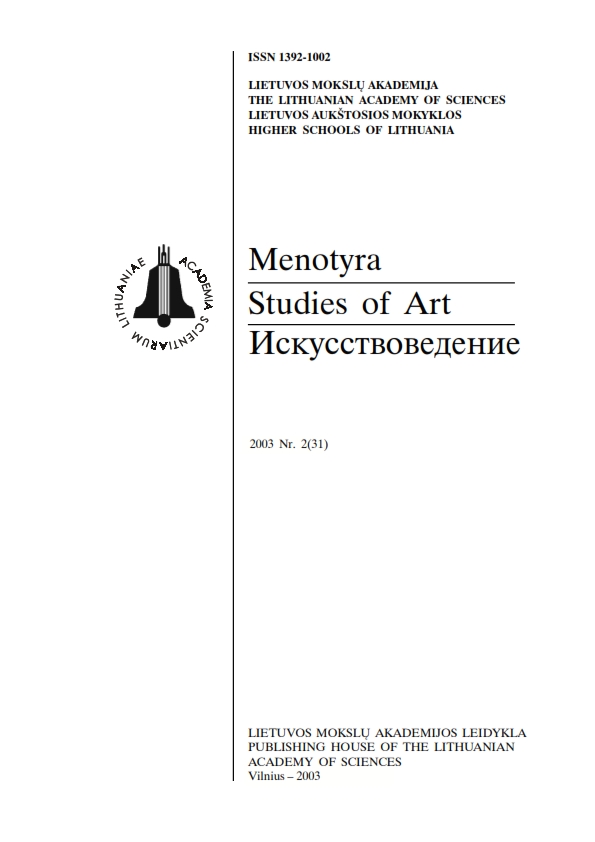XIX a. I pusėje Vilniuje išleistų maldynų iliustracijos
Illustrations in prayer books issued in Vilnius in the first half of the 19th century
Author(s): Rūta JanonienėSubject(s): Christian Theology and Religion, Visual Arts, 19th Century
Published by: Lietuvos mokslų akademijos leidykla
Summary/Abstract: This article analyses illustrations that appeared in prayer books, guides to the Stations of the Cross and prayers dedicated to specific objects of cult that were issued in Vilnius in the first half of the 20th century. This form of graphic art was especially popular in the period under discussion and was meant for the general public. The article discusses the general principles of illustration of religious texts and points out that thematic illustrations depicting the scenes of Christ's life and sufferings accompanied only two types of devotion: the Rosary and the Stations of the Cross. Other parts of prayer books were either un-illustrated or adorned by vignettes.The author notes that creation of separate illustrations for every single publication was not a common practice; instead, typical specimens possessed by printmakers were used. Only in specific cases, when the publication was dedicated to a particular object of worship, it was illustrated by a copy of a venerable picture, sculpture or a series of these (e.g., Guide to Vilnius Calvary Road illustrated with Joseph Oziemblowski's lithographs). In most cases illustrations were unsigned, but occasionally their authors may be identified from their personal style (e.g., the author of the current article ascribes the authorship of a group of woodcuts portraying a series of the Passion of Christ, which was used by J. Zavadzki's printing house, to the famous 19th-century artist Wincenty Smokowski). The illustrations to the prayer books in the Lithuanian language - these were meant for the lowest classes of society - are marked by a peculiar primitivism and remind by their style folk woodcuts that have been extremely popular during the 19th century. The author makes an assumption that both these illustrations and some woodcuts ascribed to folk artists could have been created by less-prominent students of Vilnius Art School.Despite their different style and level of professionalism, all of these illustrations bear general characteristics of the artistic language specific to Romanticism: inclination towards literariness, historicism, striving to monumentalize local objects of worship and the artistic heritage of the former Grand Duchy of Lithuania, expressivity of drawing and composition, and rejection of Classicist canons.
Journal: Menotyra
- Issue Year: 2003
- Issue No: 2(31)
- Page Range: 27-31
- Page Count: 5
- Language: Lithuanian

